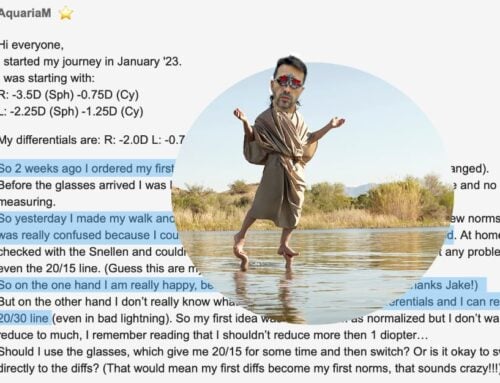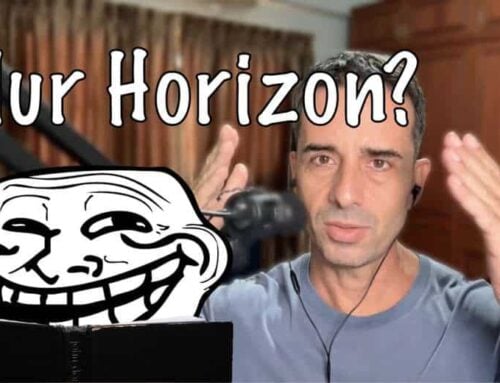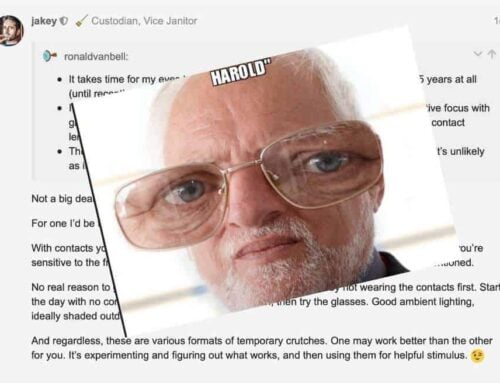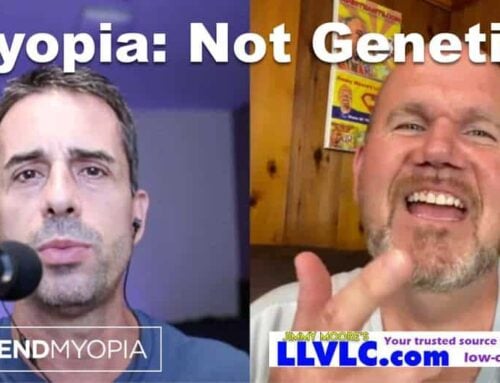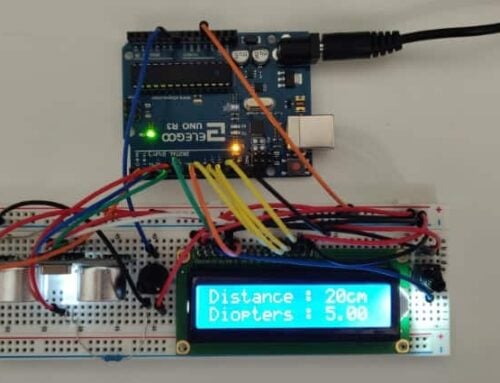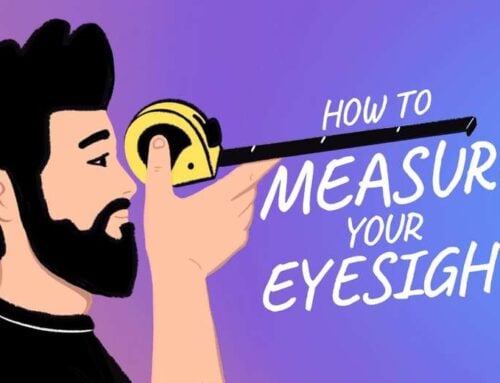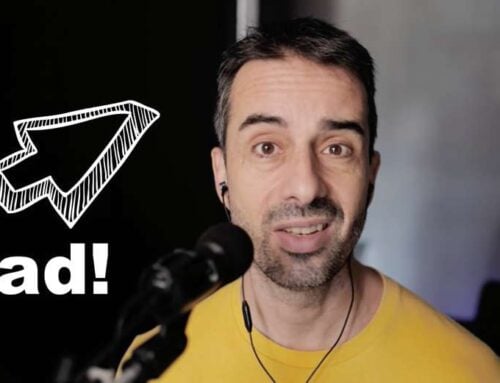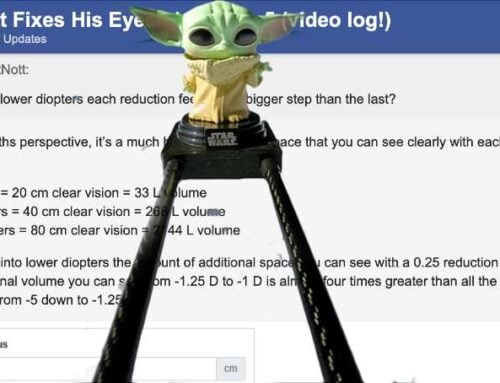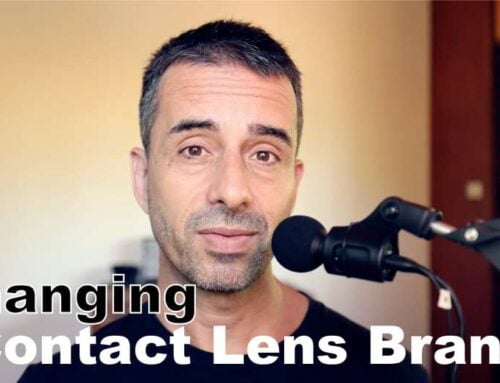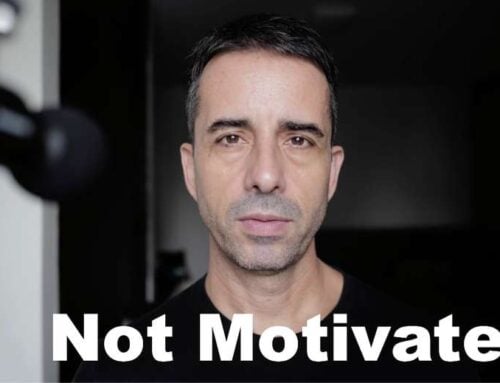There is a fairly common theme in many vision improvement programs. They tend to be comprised of exercises (which usually are not effective, long term – as discussed elsewhere in the blog), and often suggest not wearing glasses.
From there, I get a fair amount of e-mail from people asking, whether they should indeed stop wearing glasses.
To further substantiate the idea of benefits of not wearing glasses, there is feedback of great improvements, from participants even here, in the forum:
“Currently, I don’t experience any true blur (that I’m aware of)…only double vision. If I could get the two images to align, I feel like I’d have near-perfect vision. That’s probably a bit optimistic, but given that I get “clear flashes” of vision from short to long ranges, it shows that my eyes are capable of fusing the two images.
The oddest thing, is that most of these clear flashes take place when I take my glasses OFF! As in, I’ll be doing some print-pushing and my eyes get tired. I’ll take my glasses off to rest and BAM, I get a flash of perfect vision. I can even hold this perfect vision if I back off from the screen an additional 4 feet or more. Similar clear flashes occur when taking glasses off at longer distances, with the Snellen charts mostly legible to 20/30 or 20/20 in medium sunlight. (They likely would be perfectly legible in direct sunlight, if that were available.) In fact, whenever I have trouble focusing, regardless of distance, if I take my glasses off, it seems to give a temporary stimulus to improve.”
But that isn’t how the Vision Improvement Course starts out. In fact, for the better part of the first 45 days, we don’t talk about distance vision hardly at all! What gives?
The premise of the #endmyopia Method, is based on some of the core concepts of myopia:
First, we have the problem of the cause. The cause of course, being extended close-up focus, and the resulting focusing muscle spasm. The real problem is, that we need to fix the myopia, without being able to remove the cause – you still want to spend hours a day in close-up focus. It creates a unique challenge, one that programs focused on exercises just can’t address: How to we cure the myopia, without addressing the main symptom?
This is why the program starts out with a lot of close-up related work. Understanding the centimeter measurement, and the resulting better understood relationship between strain and close-up, on the individual level.
From there, being able to move into an acceptable level of close-up strain, vs. an unchecked amount of close-up strain, as is the case for most individuals, just starting out with the program. Understanding your own individual threshold where your focusing muscle will lock up, and begin to cause long term harm to your eyesight, and avoiding that threshold, becomes an important practice.
Beyond that, learning about active focus is far easier done when dealing in centimeter increments, focused up-close, than trying to work at a distance (as above forum poster describes).
Once we have established a way to gauge close-up strain, minimize it, work actively on focusing (the stimulus part of the program), then we can begin addressing distance vision. Notice how there is a whole lot happening, before we even get into the topic of distance at all, nevermind not using glasses at all. It is once we have reduced distance prescription successfully, ideally more than once, that our eyes tend to begin to start functioning actively again, as they should.
It is then that the “clear flashes” tend to happen, as a described frequently in the forum. Once we reach that stage, we can start working without correction, and experiencing the leap improvements that happen at that level.
As the poster further notes:
“This is the exact opposite of how it was in the beginning, when it was necessary to start with a clear image, before backing up and trying to “work the blur”. Now, the biggest gains come from the biggest blur, and STARTING from that blur.”
** (The whole forum thread can be found here.) **
There is no shortcut around these steps. Our practice spent the last 40 years trying to find the fastest, most effective ways to reverse myopia, and considering some of the amazing feedback, the process does work fairly well. You may be able to undo a decade of unhealthy eyesight consequences in a matter of a year, often much less. that is fairly amazing. But that is about the limit of what is feasible. You do have to follow the steps, starting with strain management, understanding close-up, understanding active focus, before being able to move on to working with bigger gains, and bigger momentum.
And all that being said, don’t forget to do as I suggest in closing of most every blog post – enjoy the process!




